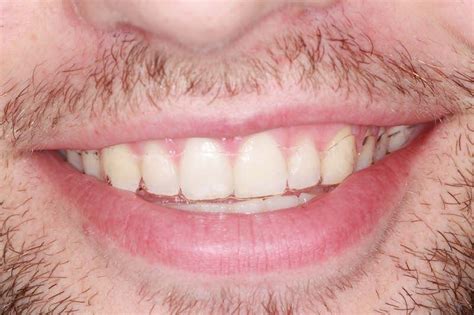Spaced Teeth No More: Simple DIY Solutions (Temporarily Improve Appearance)
Many people are self-conscious about gaps between their teeth, often called diastema. While orthodontic treatment offers a permanent solution, there are several simple DIY methods that can temporarily improve the appearance of spaced teeth. It's crucial to understand that these methods are temporary cosmetic fixes and do not address the underlying cause of the gap. They are best suited for short-term needs or to boost confidence before seeing a professional.
What Causes Spaced Teeth?
Before exploring DIY solutions, it's helpful to understand the reasons behind spaced teeth. Common causes include:
- Genetics: Family history of spaced teeth is a significant contributing factor.
- Gum Disease: Gum disease can lead to bone loss around the teeth, causing gaps to appear.
- Oral Habits: Thumb sucking or tongue thrusting, especially in children, can push teeth apart.
- Missing Teeth: The absence of one or more teeth can lead to adjacent teeth shifting and creating spaces.
- Size Discrepancy: Teeth that are too small relative to the jawbone can result in gaps.
Simple DIY Solutions for Spaced Teeth (Temporary)
These solutions are purely cosmetic and won't permanently close the gaps. Always consult a dentist for a proper diagnosis and treatment plan.
1. Dental Veneers (Temporary)
While professional dental veneers are permanent and require a dentist's expertise, temporary, at-home veneer kits offer a quick fix for special occasions. These usually involve applying thin shells to the teeth to cover gaps. Be cautious: Poorly applied temporary veneers can damage your teeth, and their longevity is limited. They're a short-term solution for events rather than long-term use.
2. Tooth Bonding (Professional, but Explained for Context)
Tooth bonding is a professional procedure where a dentist applies a tooth-colored resin to close gaps. While not a DIY method, understanding this process helps contextualize the limitations of at-home solutions. Dental bonding offers a more durable and aesthetically pleasing solution than temporary DIY methods.
3. Makeup and Contouring Techniques
Strategic application of makeup can create the illusion of closing gaps. Darker shades applied to the gaps can make them appear smaller, while highlighting the edges of the teeth can draw attention away from the spaces. Many online tutorials demonstrate this technique.
4. Teeth Whitening (Indirectly Improves Appearance)
Brighter teeth often make gaps less noticeable. Whitening toothpastes or at-home whitening kits can improve the overall appearance of your smile, subtly minimizing the visual impact of spaced teeth. However, this doesn't actually close the gap.
Addressing the Underlying Cause: When to See a Dentist
While these DIY methods offer temporary solutions, it’s crucial to address the underlying cause of spaced teeth for a permanent fix. Consult a dentist if:
- You have significant gaps between your teeth.
- You’re concerned about the appearance of your smile.
- You experience any pain, discomfort, or gum issues.
Frequently Asked Questions (FAQs)
How can I close the gap between my two front teeth naturally?
Natural closure of gaps is only possible through orthodontic treatment like braces or Invisalign. DIY methods only mask the appearance temporarily.
Can I close gaps in my teeth without braces?
While DIY methods can improve the visual appearance, they won’t close the gaps. Braces or other orthodontic treatments are the only effective ways to achieve permanent closure.
What is the fastest way to close a gap between teeth?
Orthodontic treatments like Invisalign offer a relatively fast way to close gaps compared to traditional braces, but the speed depends on the severity of the gap.
Are there any home remedies to close gaps between teeth?
No proven home remedies exist to permanently close gaps between teeth. DIY solutions are cosmetic and temporary.
Remember, while these DIY options provide temporary solutions, consulting a dentist is crucial for long-term solutions and maintaining oral health. They can provide accurate diagnoses and recommend the best treatment for your specific needs.

